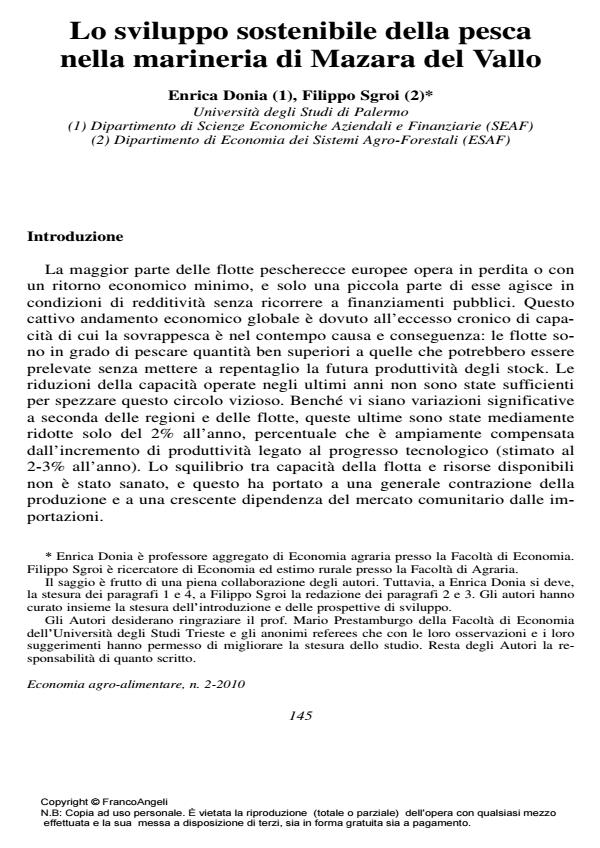Sustainable Development of the Fisheries in the Seamanship of Mazara del Vallo
Journal title ECONOMIA AGRO-ALIMENTARE
Author/s Enrica Donia, Filippo Sgroi
Publishing Year 2011 Issue 2010/2
Language Italian Pages 25 P. 145-169 File size 316 KB
DOI 10.3280/ECAG2010-002009
DOI is like a bar code for intellectual property: to have more infomation
click here
Below, you can see the article first page
If you want to buy this article in PDF format, you can do it, following the instructions to buy download credits

FrancoAngeli is member of Publishers International Linking Association, Inc (PILA), a not-for-profit association which run the CrossRef service enabling links to and from online scholarly content.
In a place like Sicily, where sea fishing and port activities are part of the territory, history and culture, fishery has always been vital to man and, for this reason, today it must be studied, protected and helped in the difficult transition towards long-term sustainability. Fishing is a driving sector for Mazara economy both for number of working days during the fishing season, and for industrial activities operating around this field (transformation, packaging, and distribution). A micro-economic analysis was carried on a sample of fishing enterprises in order to analyze the problems of the here studied seamanship. The analysis is based on the employers’ interviews. The collected data highlights: the quantity and quality of fishing, materials and services outside and around this field and, the final destination of the product. The data processed through the economic balance sheet, allowed the identification of the current seamanship economic situation in Mazara del Vallo. Possible solutions (business strategies) to develop the sector competitiveness have been drawn from the results obtained by processing the data.
Keywords: Economics, fishery, sustainable development
Jel codes: Q01, Q12
Enrica Donia, Filippo Sgroi, Lo sviluppo sostenibile della pesca nella marineria di Mazara del Vallo in "ECONOMIA AGRO-ALIMENTARE" 2/2010, pp 145-169, DOI: 10.3280/ECAG2010-002009